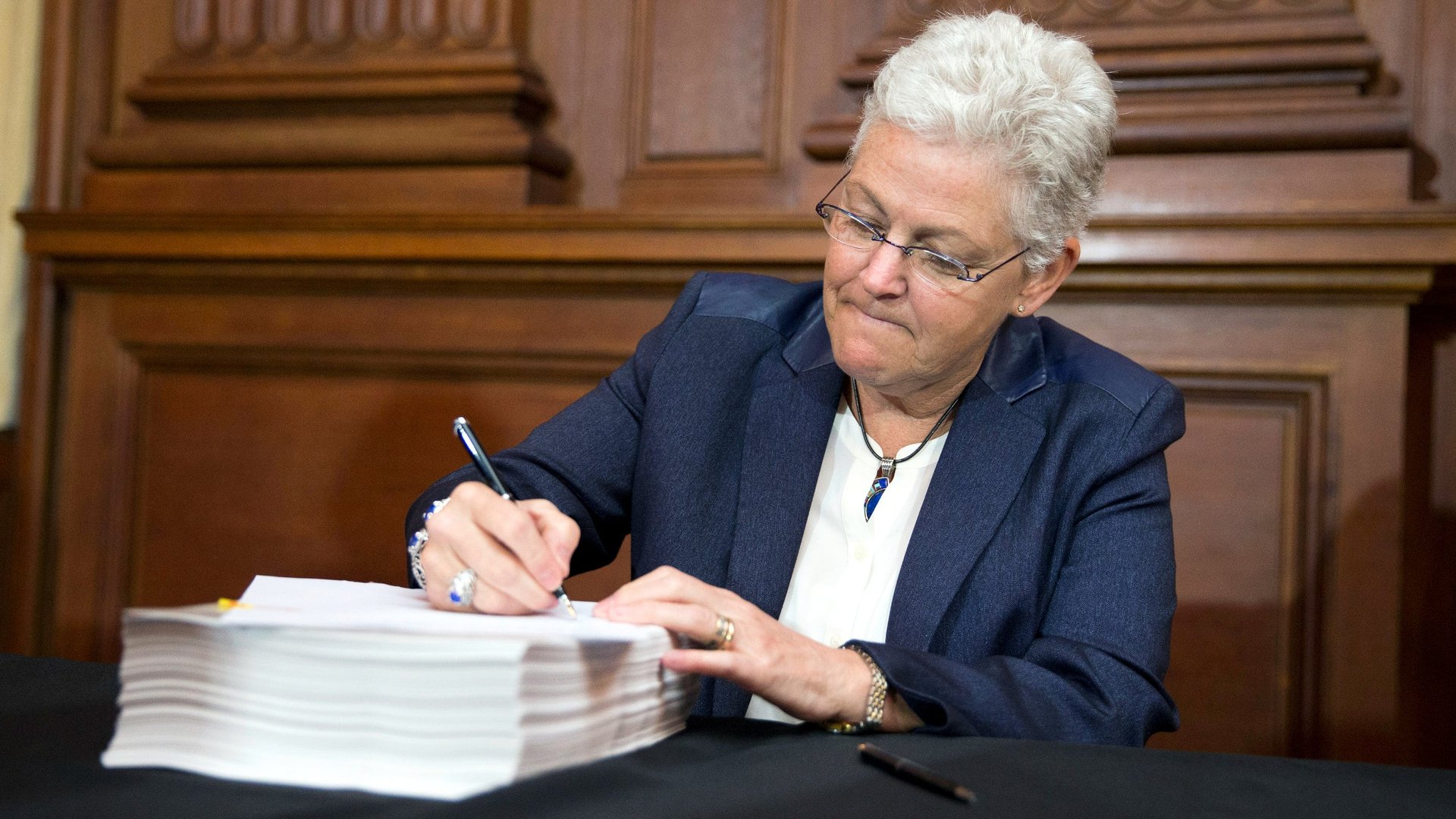Why we need a 3,000-page rule to say “pollute less”
The US Environmental Protection Agency’s new rules to limit greenhouse gas emissions from power plants are reportedly 3,000 pages long. Is all that really necessary to get across a fairly simple message to power plant operators?


The US Environmental Protection Agency’s new rules to limit greenhouse gas emissions from power plants are reportedly 3,000 pages long. Is all that really necessary to get across a fairly simple message to power plant operators?
Yes. And that’s largely because businesses ask for that kind of detail. The debate over how to regulate business often hinges on two competing factors: legislators’ desire to achieve broad goals, versus companies’ desire for certainty about what they can do. The people caught in the middle work at the regulatory agencies applying lawmakers’ dictates to often-skittish firms.
Laws, such as the Dodd-Frank financial regulation reforms penned in the wake of the financial crisis, can have simple goals: for example, stopping federally-insured banks from speculating with their own capital. But as regulators take on that authority, they have to write rules for bankers to follow, with the banks’ lawyers weighing in with lots of answers to important questions like, what exactly is speculation? And what counts as capital? That’s how you end up with the 950-page Volcker rule, which attempts to detail when banks can do what with their capital.
It’s the same story with these anti-climate change rules, but with the added complication that there isn’t a new law requiring these rules. Rather, with Congress deadlocked over how to reduce US carbon emissions to meet international goals, the Obama administration (with the imprimatur of the Supreme Court) have decided that the EPA’s existing authority to stop air pollution gives it the ability to tackle carbon emissions. To survive legal challenges and provide useful guidance to companies, these rules had to be carefully written.
So how long are they, really? The proposed rule itself is a mere 626 pages, although it’s not yet in its final format. But there are also hundreds of pages of technical support documents. Which isn’t so surprising, really: Producing electricity and atmospheric chemistry are both complicated topics. The EPA’s standards need to cover all different kinds of power plant technologies, ranging from ”modified fossil fuel-fired utility boilers” to “modified natural gas-fired stationary combustion turbines” and reconstructed versions of the same. They also must develop clear mechanisms for measuring emissions to see if standards are being met. And that’s before we get to the EPA’s phased-in state-by-state emissions requirements, and the options for other ways to reduce greenhouse gases, from carbon markets to upgrading renewable energy infrastructure.
The alternative to writing out all the details in advance would be far blunter rules that regulators would apply as they saw appropriate, but that reduces certainty for businesses, and would require more funding to give agencies the manpower to monitor and enforce emissions caps.
A much simpler way to achieve emissions reductions and put markets to work solving our climate change problem would be a tax on the carbon content of fuels, many economists say. They’re probably right, but with lawmakers unlikely to take up such a law for years to come, and the need to reduce carbon emissions pressing, a regulatory solution seemed the most expedient choice to the Obama administration.
And of course, carbon tax advocates may forget that tax rules are the only artifact of modern bureaucracy almost as complicated as government regulations. Modern life, it turns out, has lots of moving parts.